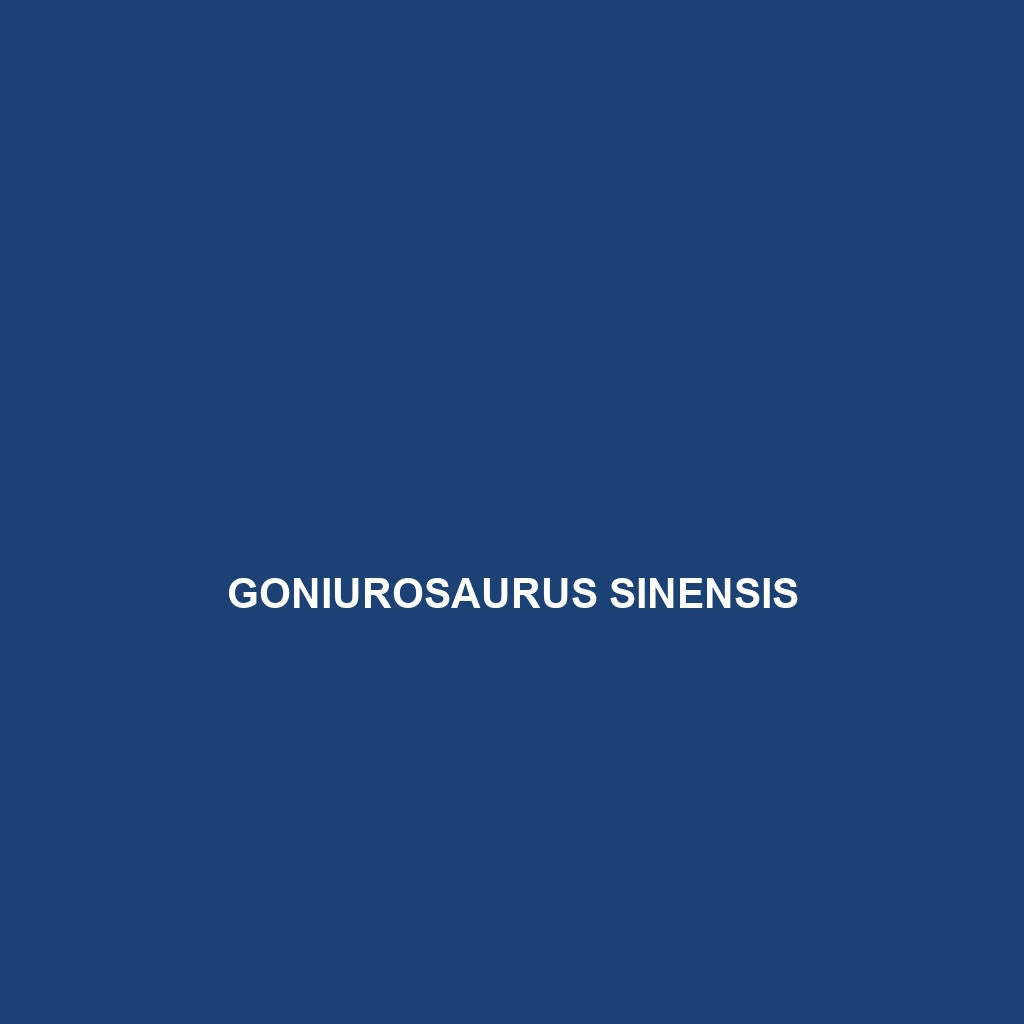Common Name
Goniurosaurus sinensis
Scientific Name
Goniurosaurus sinensis
Habitat
Goniurosaurus sinensis, commonly known as the Chinese Cave Geckos, primarily inhabits the humid and temperate forests of southern China. This species thrives in karst landscapes characterized by limestone formations, where it often seeks refuge in moist caves and crevices. The ideal habitat encompasses a mix of tropical and subtropical climates, typically featuring dense foliage, high humidity, and abundant rainfall. The altitudinal range where Goniurosaurus sinensis is found extends from lowland streams to highland regions, often in areas that experience seasonal rainfall, thus creating the diverse microhabitats necessary for its survival.
Physical Characteristics
Goniurosaurus sinensis exhibits distinct physical traits that make it a fascinating reptile. These geckos typically measure between 15 to 30 centimeters in body length, with a robust, flattened body that aids in navigating rocky habitats. The skin is adorned with intricate patterns of yellows and browns, providing excellent camouflage against the earthy tones of their environment. One of the most notable features is their large, expressive eyes, which are adapted for low-light conditions, enabling them to be efficient nocturnal hunters. Additionally, their long tails serve as a defense mechanism, allowing them to escape predators by shedding part of their tail if captured.
Behavior
The behavior of Goniurosaurus sinensis is largely nocturnal, which means they are primarily active during the night. As skilled climbers, these geckos use their adhesive toe pads to navigate vertical surfaces, making them proficient at foraging for insects and other small prey. Social interactions are generally limited; however, during mating seasons, males can be observed displaying territory through vocalizations and body postures to attract females. Interestingly, these reptiles have a unique habit of basking on warm rocks during the cooler evenings, allowing them to regulate their body temperature effectively.
Diet
Goniurosaurus sinensis is predominantly insectivorous, feeding on a variety of small invertebrates such as crickets, moths, and beetles. Their diet primarily consists of soft-bodied insects, which are abundant in their humid habitats. They exhibit a hunting strategy that involves ambush techniques, waiting motionless until their prey comes within striking distance. While primarily insectivorous, these geckos might occasionally consume small fruits or plants, indicating some omnivorous tendencies.
Reproduction
The reproductive cycle of Goniurosaurus sinensis is fascinating, characterized by distinct mating rituals usually occurring during the warmer months, from late spring to early summer. Females typically lay two eggs per clutch, which are deposited in moist, hidden locations that provide protection from predators. The eggs have an incubation period of approximately 60 to 80 days, with hatchlings emerging in late summer. Parental care is minimal, as the young are independent from birth and must fend for themselves immediately after hatching.
Conservation Status
Currently, the conservation status of Goniurosaurus sinensis is categorized as Vulnerable by the International Union for Conservation of Nature (IUCN). The primary threats to this species include habitat loss due to deforestation, limestone quarrying, and climate change impacts. Conservation efforts are underway to protect their natural habitats, with initiatives aimed at promoting sustainable land use and raising awareness about the importance of preserving these unique ecosystems. Protecting these regions is crucial not only for the survival of Goniurosaurus sinensis but also for maintaining the biodiversity of their habitat.
Interesting Facts
One of the most intriguing aspects of Goniurosaurus sinensis is its ability to regenerate its tail after losing it as a defense mechanism. This adaptation provides an excellent survival strategy against predators. Additionally, these geckos have unique vocalizations, which they use for communication and during mating displays. The combination of their beautiful coloration and interesting behaviors makes Goniurosaurus sinensis a popular subject among herpetologists and wildlife enthusiasts alike.
Role in Ecosystem
Goniurosaurus sinensis plays a significant role in its ecosystem as both a predator and prey. As insectivores, they help control the populations of various invertebrates, contributing to ecological balance. In turn, they serve as prey for larger animals, thus forming an integral part of the food web. Their presence in the ecosystem indicates a healthy environment, as they require specific habitat conditions to thrive. By maintaining the biodiversity of their habitats, these geckos contribute to the overall stability and health of their ecological communities.
